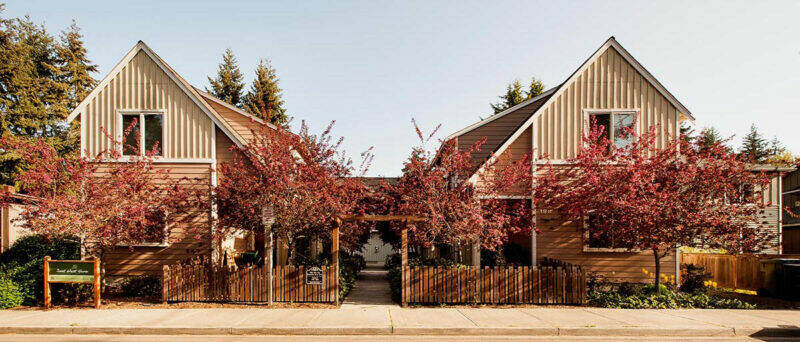Bainbridge Island has a housing problem, and the state wants to help fix it.
Public Lands Commissioner Hilary Franz held a roundtable at Windemere Real Estate Feb. 28 with local leaders to discuss strategies to incentivize affordable housing on BI. Franz chairs the “largest real estate company in Washington” — the Department of Natural Resources.
“We used to think about dense urban areas when we thought about the housing crisis, but since the pandemic, it’s everywhere,” Franz said. “The smallest of towns are not having enough affordable homes built. The difference is that rural areas have land, but there’s no money to build, and entry-level jobs are not keeping up with the cost of housing.”
BI Chamber of Commerce members met with Franz and talked about the uphill battle regarding affordable housing. Some lamented perceived inaction from the City Council, while others raised concerns about sprawl, mitigating density during tourist season and island character.
“We’ve become more suburban on the island in the forty years I’ve lived here. Are people aware of climate change and the need for resolutions with our development? Only incidentally,” architect Kent Scott said. “We need density, but we’re not Amsterdam. We need to have a fair expectation of what we can do, and where we can put housing to make a city function.”
Real estate developer John Green said that the greatest obstacle to building housing on BI is the price of land. But his projects also have been repeatedly “shouted down” by neighbors. “Leadership at City Hall is needed to say, ‘Enough, we’re going to build them.’ But the pushback from neighborhoods is intense,” Green said. “People won’t have it — ‘not in my backyard.’”
Demand for housing has outpaced supply on BI, and construction has slowed since COVID.
State projections recommend that BI build 1,977 new housing units in the next 20 years — about 1,100 of which must be affordable for low- and moderate-income households.
HB Harper, city planning manager, said if there is not enough low-income housing, and the city does not produce enough housing overall, the cost of housing becomes more expensive for everybody. “While we’ve had some of these goals and programs on the books for a while, our current efforts are definitely attempting to address that need in real-time.”
Every city must accommodate for growth. Phedra Elliott, executive director of affordable housing provider Housing Resources Bainbridge, explained that the advocacy group sees the demand up close.
HRB says there are 274 regulated rental units of affordable housing on BI, and 44 regulated housing units. Some unregulated properties are technically affordable at their current listed value, but are not held to that price once they re-enter the market. At least 264 households are on HRB’s waitlist for homeownership or rentals — and that’s only the ones who qualify.
“We receive calls from hundreds of others who cannot afford the open market, but who do not meet our stringent income qualifications and cannot be added to the waitlist,” Elliott said. “I imagine that the other affordable residences are also contending with overwhelming demand.”
The roundtable with Franz was held just days ahead of new state legislation passed March 4 that offers a tax break for construction of affordable housing on state land. House Bill 2003 states that affordable housing on DNR land will be exempt from a leasehold excise tax — akin to a property tax for privately owned land — as long as 100% of the units are affordable.
If Gov. Jay Inslee signs the bill, that means any low-income housing built on public land will be tax-free. But the DNR does not own any property on BI — except for 85 acres of unbuildable tidelands.
There is room for housing in Winslow, however.
“The way this island did its original comprehensive plan was already pretty phenomenally brilliant. It said, we’re going to put fifty percent of the people who live here in the Winslow Way area since we want to care for nature and water that brought them here,” Franz said. “They were already modeling after that sort of European context of putting density where the services are, where transportation is. That’s your foundation of who this island is.”


